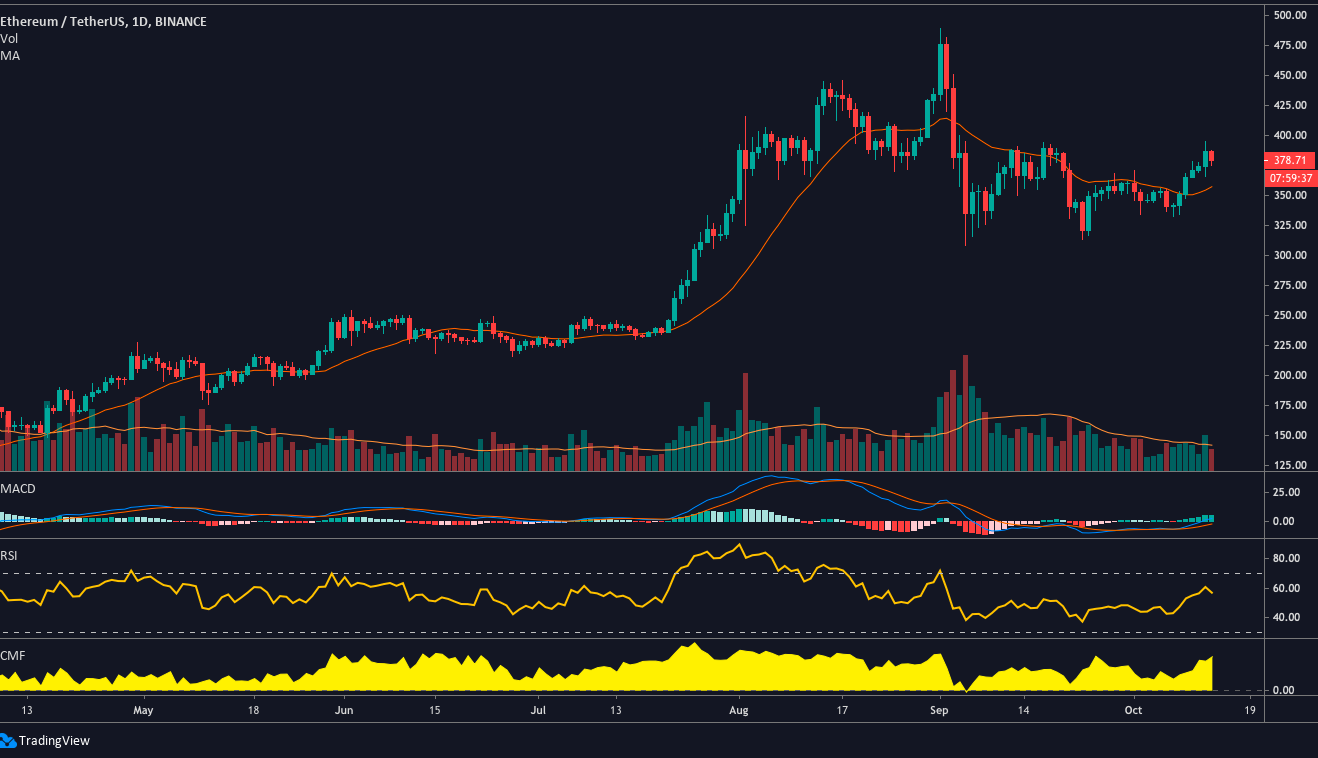Best Ethereum Transaction Tracker Tools 2025 Monitor ETH Transactions in Real Time

When navigating the complex world of cryptocurrency, having access to a reliable Ethereum transaction tracker becomes essential for investors, developers, and traders alike. Whether you’re verifying a payment, monitoring wallet activity, or conducting blockchain analysis, the right tracking tools can provide invaluable insights into Ethereum network transactions. In today’s rapidly evolving cryptocurrency landscape, understanding how to effectively track and monitor Ethereum transactions has become a crucial skill that can save both time and money.
The Ethereum blockchain processes millions of transactions daily, making it challenging to manually monitor specific transfers or wallet activities. This is where sophisticated Ethereum transaction tracker tools come into play, offering real-time monitoring capabilities, detailed transaction histories, and comprehensive blockchain analysis features. These tools not only help users verify transaction confirmations but also provide deeper insights into network congestion, gas fees, and transaction patterns that can inform better decision-making in the crypto space.
What is an Ethereum Transaction Tracker
An Ethereum transaction tracker is a specialized tool or service that allows users to monitor, search, and analyze transactions on the Ethereum blockchain network. These trackers serve as user-friendly interfaces to the otherwise complex blockchain data, making it accessible to both technical and non-technical users.
Core Functions of Transaction Trackers
Transaction trackers perform several essential functions that make blockchain data comprehensible and actionable. They parse raw blockchain data and present it in an organized, searchable format that users can easily navigate. Most trackers provide real-time updates on transaction status, including pending, confirmed, and failed transactions.
These tools also offer historical transaction data, allowing users to review past activities and identify patterns in wallet behavior. Advanced trackers include analytics features that can reveal insights about network usage, popular tokens, and transaction volume trends.
How Ethereum Transaction Tracking Works
The tracking process begins when a transaction is broadcast to the Ethereum network. Transaction trackers monitor the network continuously, collecting data about new transactions as they occur. This data includes transaction hashes, sender and receiver addresses, transaction amounts, gas fees, and timestamps.
Once collected, this information is indexed and stored in databases that enable quick searching and filtering. Users can then access this information through web interfaces, APIs, or mobile applications, depending on the tracker service they choose.
Top Ethereum Transaction Tracker Tools
Etherscan The Industry Standard
Etherscan remains the most popular and comprehensive Ethereum transaction tracker available today. This free service provides detailed transaction information, smart contract verification, and extensive blockchain analytics. Users can search for transactions using various parameters, including transaction hashes, wallet addresses, or block numbers.
The platform offers advanced features such as token tracking, DeFi protocol analysis, and gas tracker tools that help users optimize their transaction costs. Etherscan’s user-friendly interface makes it accessible to beginners while providing the depth of information that experienced users require.
Blockchair Multi-Blockchain Explorer
Blockchair stands out as a versatile blockchain explorer that supports Ethereum alongside other major cryptocurrencies. This ETH transaction tracker provides powerful search capabilities and advanced filtering options that allow users to find specific transactions quickly.
The platform offers unique features such as privacy coin support, API access, and detailed statistics about blockchain networks. Blockchair’s clean interface and comprehensive data make it an excellent choice for users who work with multiple cryptocurrencies.
Etherchain Focused Ethereum Analysis
Etherchain specializes exclusively in Ethereum blockchain analysis, providing detailed insights into network performance and transaction patterns. This tracker offers real-time monitoring of network congestion, gas price trends, and mining statistics.
The platform includes advanced charting tools and historical data analysis that can help users understand long-term trends in Ethereum network usage. Etherchain’s focus on Ethereum makes it particularly valuable for serious Ethereum investors and developers.
Key Features to Look for in an Ethereum Transaction Tracker
![]()
Real Time Transaction Monitoring
The most crucial feature of any effective Ethereum transaction tracker is the ability to provide real-time updates on transaction status. This includes immediate notifications when transactions are confirmed, failed, or stuck in pending status due to network congestion.
Real-time monitoring also extends to network conditions, including current gas prices, block times, and overall network congestion levels. This information helps users make informed decisions about when to initiate transactions and how much gas to pay for timely confirmation.
Advanced Search and Filtering Capabilities
Professional-grade transaction trackers should offer sophisticated search functionality that goes beyond basic transaction hash lookups. This includes the ability to search by date ranges, transaction amounts, gas prices, and specific token types.
Advanced filtering helps users identify patterns in transaction data, such as recurring payments, large transfers, or unusual activity that might indicate security concerns. These features are particularly valuable for businesses and power users who need to analyze large volumes of transaction data.
API Access and Integration Options
For developers and businesses, API access is essential for integrating transaction tracking capabilities into their applications and services. Quality trackers provide well-documented APIs that allow programmatic access to transaction data, blockchain statistics, and real-time notifications. Integration capabilities extend to popular tools and platforms used in the cryptocurrency ecosystem, including portfolio management applications, accounting software, and trading platforms.
How to Track Ethereum Transactions Step-by-Step
Using Transaction Hash
The most direct way to track an Ethereum transaction is through its unique transaction hash (TXID). Start by copying the transaction hash from your wallet or exchange withdrawal confirmation. Navigate to your preferred Ethereum transaction tracker and paste the hash into the search field.
The tracker will display comprehensive information about the transaction, including confirmation status, block number, gas fees paid, and the addresses involved. This method provides the most detailed information about a specific transaction.
Monitoring Wallet Addresses
To track all transactions associated with a specific Ethereum wallet, enter the wallet address into the tracker’s search function. This will display a complete transaction history for that address, including incoming and outgoing transfers, token transactions, and smart contract interactions. This method is particularly useful for monitoring business wallets, tracking payments from specific sources, or analyzing the activity patterns of particular addresses.
Setting Up Transaction Alerts
Many advanced ETH transaction tracker tools offer alert systems that notify users when specific conditions are met. Users can set up alerts for incoming transactions to specific addresses, large transfers above certain thresholds, or transactions involving particular tokens.
These alerts can be delivered via email, SMS, or through API webhooks, enabling automated responses to blockchain events. This feature is invaluable for businesses that need to respond quickly to customer payments or security-related events.
Understanding Transaction Status and Confirmations
Transaction Lifecycle on Ethereum
Every Ethereum transaction goes through several stages from initiation to final confirmation. Initially, transactions exist in a “pending” state where they wait in the memory pool (mempool) for miners to include them in a block. The time spent in this stage depends on network congestion and the gas price offered.
Once a miner includes the transaction in a block, it receives its first confirmation. However, most services require multiple confirmations before considering a transaction fully settled. This process typically takes a few minutes but can extend to hours during periods of high network activity.
Interpreting Confirmation Numbers
Confirmation numbers indicate how many blocks have been mined since the block containing your transaction was added to the blockchain. Each new block represents one additional confirmation, increasing the security and finality of the transaction.
Most exchanges and services consider transactions with 12-35 confirmations as fully confirmed, though the exact number varies by service. Ethereum transaction tracker tools display current confirmation counts and estimated times until transactions reach various confirmation thresholds.
Failed and Stuck Transactions
Understanding why transactions fail or become stuck is crucial for effective blockchain navigation. Failed transactions typically result from insufficient gas limits, contract execution errors, or invalid transaction parameters.
These transactions consume gas fees even though they don’t achieve their intended effect. Stuck transactions occur when gas prices are set too low relative to network demand. These transactions remain in the mempool indefinitely until network congestion decreases or users take action to replace or cancel them.
Advanced Transaction Analysis Techniques
Gas Fee Optimization Strategies
Effective use of an Ethereum transaction tracker includes understanding gas fee patterns and optimization strategies. By analyzing historical gas price data, users can identify optimal times for transaction submission when fees are typically lower.
Many trackers provide gas price prediction tools that estimate future fee levels based on current network conditions and historical patterns. This information helps users balance transaction urgency with cost considerations.
Token Transfer Analysis
Beyond basic ETH transfers, trackers can monitor ERC-20 token transactions, NFT transfers, and complex DeFi interactions. This capability is essential for users involved in token trading, DeFi protocols, or NFT marketplaces. Advanced analysis includes tracking token holder distributions, identifying large token movements that might impact prices, and monitoring protocol-specific metrics for DeFi applications.
Smart Contract Interaction Monitoring
Modern Ethereum transaction tracker tools provide detailed insights into smart contract interactions, including function calls, event logs, and state changes. This information is crucial for developers debugging contracts and users verifying that their intended actions were executed correctly. Contract verification features help users confirm that they’re interacting with legitimate, audited smart contracts rather than potential scams or malicious code.
Security and Privacy Considerations
Protecting Your Transaction Privacy
While Ethereum transactions are publicly visible on the blockchain, users can take steps to enhance their privacy when using transaction trackers. This includes using VPNs when accessing tracker websites and being cautious about linking multiple addresses to the same identity. Some advanced users employ techniques such as coin mixing or privacy-focused wallets to obscure transaction patterns, though these methods require careful consideration of legal and regulatory implications.
Identifying Suspicious Activity
ETH transaction tracker tools can help users identify potentially fraudulent or suspicious activities. Red flags include unusual transaction patterns, interactions with known scam addresses, or attempts to drain wallets through complex smart contract interactions. Regular monitoring of wallet addresses and transaction patterns can provide early warning of security breaches or unauthorized access attempts.
Best Practices for Safe Tracking
When using transaction tracking tools, always verify URLs to avoid phishing sites that mimic legitimate trackers. Use bookmarks for frequently accessed trackers and be cautious about entering sensitive information on any tracking website. Consider using multiple tracking tools to cross-verify important transaction information, especially for high-value transfers or critical business transactions.
Business Applications of Ethereum Transaction Tracking
![]()
E-commerce Integration
Businesses accepting Ethereum payments can integrate Ethereum transaction tracker APIs to automate payment verification and order fulfillment processes. This integration reduces manual verification work and provides customers with real-time payment status updates. Automated tracking systems can trigger inventory updates, shipping notifications, and customer communications based on transaction confirmations, creating a seamless payment experience.
Compliance and Audit Requirements
Financial institutions and regulated businesses use transaction tracking for compliance monitoring and audit trail maintenance. These systems can automatically flag transactions that require additional scrutiny or reporting under various regulatory frameworks. Comprehensive transaction records provided by tracking tools support tax reporting, anti-money laundering (AML) compliance, and know-your-customer (KYC) requirements.
Treasury Management
Corporate treasury departments utilize advanced tracking tools to manage cryptocurrency holdings, monitor cash flows, and optimize transaction timing for cost efficiency. Real-time monitoring helps treasurers make informed decisions about fund movements and investment timing. Integration with traditional accounting systems allows businesses to maintain accurate records of cryptocurrency transactions alongside conventional financial activities.
Troubleshooting Common Tracking Issues
Delayed Transaction Updates
Sometimes, Ethereum transaction tracker tools may show delayed information due to network synchronization issues or high load on tracking services. If a transaction appears missing or outdated, try refreshing the page or checking multiple tracking services. Network congestion can also cause delays in transaction processing, making it appear as though trackers are not updating correctly when the issue lies with the Ethereum network itself.
Incorrect Transaction Information
Discrepancies in transaction information between different trackers usually resolve as systems synchronize with the latest blockchain data. However, persistent differences may indicate issues with specific tracking services or potential blockchain reorganizations. Always verify critical transaction information using multiple sources, especially for high-value transactions or time-sensitive operations.
API Rate Limiting and Access Issues
Heavy users of tracking APIs may encounter rate limiting that restricts the number of requests per period. Understanding these limitations and implementing appropriate caching and request management strategies helps maintain reliable access to tracking data. Consider upgrading to premium API tiers for business applications that require higher request volumes or additional features not available in free tiers.
Future of Ethereum Transaction Tracking
Layer 2 Solutions Integration
As Ethereum scaling solutions like Arbitrum, Optimism, and Polygon gain adoption, Ethereum transaction tracker tools are evolving to support these Layer 2 networks. This integration provides users with comprehensive views of their activities across the entire Ethereum ecosystem. Cross-chain tracking capabilities are becoming essential as users increasingly interact with multiple blockchain networks and bridge assets between different protocols.
Enhanced Analytics and AI Integration
Next-generation tracking tools are incorporating artificial intelligence and machine learning capabilities to provide predictive analytics, anomaly detection, and automated insights. These features help users anticipate network congestion.
Optimize transaction timing and identify potential security threats. Advanced analytics can reveal complex patterns in transaction data that might not be apparent through manual analysis, providing valuable insights for traders, researchers, and business users.
Privacy-Preserving Tracking Solutions
As privacy concerns grow, tracking tools are developing features that provide necessary transparency while protecting user privacy. These solutions might include zero-knowledge proofs, confidential transactions, or other cryptographic techniques that verify transaction validity without revealing sensitive details. Balancing transparency requirements with privacy protection will be crucial for the continued adoption of cryptocurrency tracking tools in regulated environments.
Also Read: Best Ethereum Transaction Tracker Tools 2025 Monitor ETH Transactions in Real Time
Conclusion
Mastering the use of an Ethereum transaction tracker is essential for anyone serious about participating in the Ethereum ecosystem. Whether you’re a casual investor verifying payments, a business owner integrating cryptocurrency payments, or a developer building blockchain applications, understanding how to effectively track and analyze Ethereum transactions provides significant advantages.
The tools and techniques outlined in this guide provide a comprehensive foundation for transaction tracking, from basic hash lookups to advanced analytics and business integration. As the Ethereum network continues to evolve with Layer 2 solutions and upcoming upgrades, staying informed about the latest tracking tools and techniques will remain crucial for success.
Ready to start tracking your Ethereum transactions more effectively? Begin by exploring the recommended Ethereum transaction tracker tools mentioned in this guide, and gradually incorporate more advanced features as your needs grow. The transparency and verifiability that these tools provide are among the key advantages of blockchain technology – make sure you’re taking full advantage of them.




